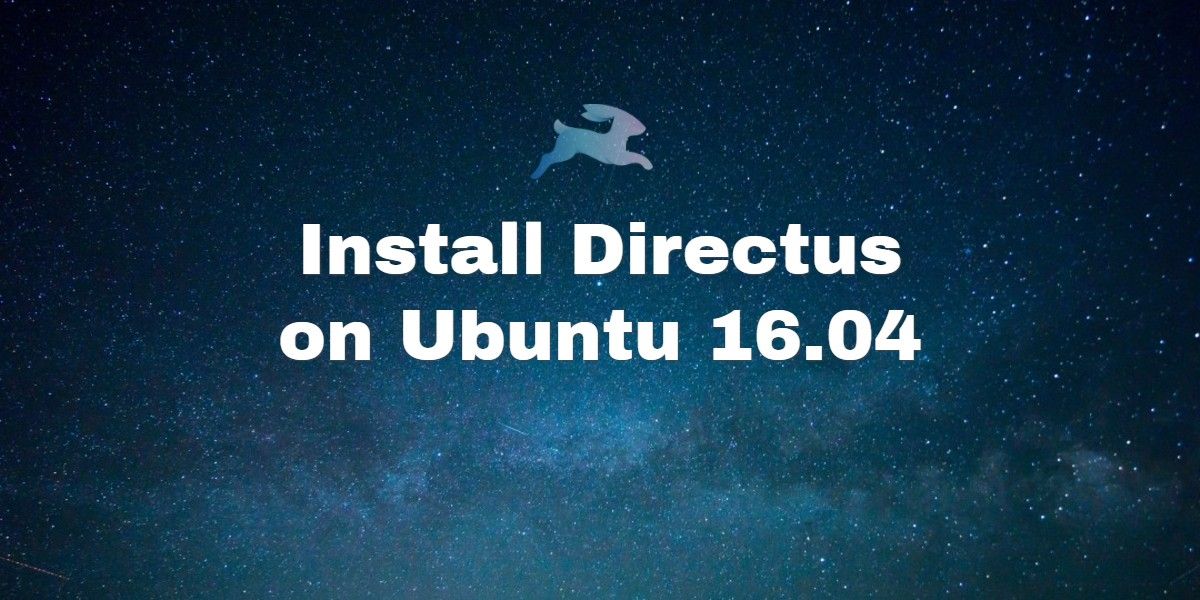In this tutorial, we will explain how to install Directus CMS on an Ubuntu 16.04 Cloud with MariaDB, PHP-FPM and Nginx. Directus is an open-source, self-hosted headless CMS that manages your content (not your workflow) written in Backbone.js providing a feature-rich environment for rapid development and management of custom database schemas. This guide should work on other Linux VPS systems as well but was tested and written for an Ubuntu 16.04 Cloud.
Update the system and install necessary packages
ssh user@vps_IP sudo apt-get update && sudo apt-get -y upgrade sudo apt-get install software-properties-common nano curl git unzip
Install MariaDB 10.1
To add the MariaDB repository to your sources list and install the latest MariaDB 10.1 server, run the following commands:
>sudo apt-key adv --recv-keys --keyserver hkp://keyserver.ubuntu.com:80 0xF1656F24C74CD1D8 sudo add-apt-repository 'deb [arch=amd64,i386] http://ftp.osuosl.org/pub/mariadb/repo/10.1/ubuntu xenial main' sudo apt-get update sudo apt-get install -y mariadb-server
When the installation is complete, run the following command to secure your installation:
>mysql_secure_installation
Next, we need to create a database for the Directus installation.
>mysql -uroot -p MariaDB [(none)]> CREATE DATABASE directus; MariaDB [(none)]> GRANT ALL PRIVILEGES ON directus.* TO 'directus'@'localhost' IDENTIFIED BY 'strong_password'; MariaDB [(none)]> FLUSH PRIVILEGES; MariaDB [(none)]> \q
Install PHP, Composer and required PHP modules
To install the latest stable version of PHP version 7.0 and all necessary modules, run:
>sudo apt-get -y install php-fpm php-cli php-json php-curl php-gd php-mysql php-mcrypt php-imagick php-xml
The following commands will set the PHP memory limit to 512MB, change the values of upload_max_filesize and post_max_size to 200M and set the timezone to UTC.
>sudo sed -i "s/memory_limit = .*/memory_limit = 512M/" /etc/php/7.0/fpm/php.ini sudo sed -i "s/;date.timezone.*/date.timezone = UTC/" /etc/php/7.0/fpm/php.ini sudo sed -i "s/;cgi.fix_pathinfo=1/cgi.fix_pathinfo=1/" /etc/php/7.0/fpm/php.ini sudo sed -i "s/upload_max_filesize = .*/upload_max_filesize = 200M/" /etc/php/7.0/fpm/php.ini sudo sed -i "s/post_max_size = .*/post_max_size = 200M/" /etc/php/7.0/fpm/php.ini
Composer is a dependency manager for PHP with which you can install packages. Composer will pull in all the required libraries and dependencies you need for your project.
>curl -sS https://getcomposer.org/installer | php sudo mv composer.phar /usr/local/bin/composer
Create a new PHP-FPM pool for your user:
>sudo nano /etc/php/7.0/fpm/pool.d/your_username.conf [your_username] user = your_username group = your_username listen = /run/php/php7.0-your_username.sock listen.owner = your_username listen.group = your_username listen.mode = 0666 pm = ondemand pm.max_children = 5 pm.process_idle_timeout = 10s pm.max_requests = 200 chdir = /
Do not forget to change your_username with your username.
Restart PHP-FPM:
>sudo service php7.0-fpm restart
Install Directus
Create a root directory for your Directus using the following command:
>mkdir -p ~/myDirectus.com/public_html
Clone the project repository from GitHub:
>git clone https://github.com/directus/directus.git ~/myDirectus.com
Change to the myDirectus.co directory:
>cd ~/myDirectus.com
Install all PHP dependencies using composer
>composer install
Install and configure Nginx
To install the latest stable version of Nginx available on the Ubuntu repositories, run:
>sudo apt-get -y install nginx
Next, create a new Nginx server block:
>sudo nano /etc/nginx/sites-available/myDirectus.com
>server {
listen 80;
server_name www.myDirectus.com myDirectus.com;
root /home/your_username/myDirectus.com;
index index.php index.html index.htm;
location / {
try_files $uri $uri/ /index.php;
}
access_log /var/log/nginx/directus.access.log;
error_log /var/log/nginx/directus.error.log;
location ~ \.php$ {
fastcgi_split_path_info ^(.+\.php)(/.+)$;
fastcgi_pass unix:/run/php/php7.0-your_username.sock;
fastcgi_index index.php;
include fastcgi_params;
fastcgi_param SCRIPT_FILENAME $document_root$fastcgi_script_name;
fastcgi_buffer_size 16k;
fastcgi_buffers 4 16k;
}
location ~ /\.ht {
deny all;
}
}
Do not forget to change your_username with your username.
Activate the server block by creating a symbolic link:
>sudo ln -s /etc/nginx/sites-available/myDirectus.com /etc/nginx/sites-enabled/myDirectus.com
Test the Nginx configuration and restart nginx:
>sudo nginx -t sudo service nginx restart
Open http://myDirectus.com/ in your favorite web browser and you should see the Directus install screen. On this page, you’ll need to select the default language, enter your project name, create an admin user and enter the database details you created earlier. Once you have completed the install, make sure to delete install folder.
That’s it. You have successfully installed Directus on your Ubuntu 16.04 VPS. For more information about how to manage your Directus installation, please refer to the official Directus documentation.
Of course, you don’t have to do any of this if you use one of our Linux Cloud Hosting services, in which case you can simply ask our expert Linux admins to setup this for you. They are available 24×7 and will take care of your request immediately.
PS. If you liked this post please share it with your friends on the social networks using the buttons on the left or simply leave a reply below. Thanks.

My nginx configuration to avoid mod_rewrite:
server {
listen 80;
listen [::]:80 ipv6only=on;
root /home/your_username/myDirectus.com;
index index.php index.html index.htm;
# Make site accessible from http://localhost/
server_name www.yourdomain.com yourdomanin.com;
sendfile off;
location /api {
if (!-e $request_filename) {
rewrite ^/1/extensions/([^/]+) /api/api.php?run_extension=$1 last;
}
rewrite ^ /api/api.php?run_api_router=1 last;
}
location / {
try_files $uri $uri/ /index.php$args;
}
# Force this file extension to be output as text
location ~ ^/(media|storage)/.*\.(php|phps|php5|htm|shtml|xhtml|cgi.+)?$ {
add_header Content-Type text/plain;
}
# No direct access to extension api file
location ~* [^/]+/customs/extensions/api\.php$ {
return 403;
}
# No direct access to customs api endpoints files
location ~* /customs/endpoints/ {
deny all;
}
error_page 404 /404.html;
# redirect server error pages to the static page /50x.html
#
error_page 500 502 503 504 /50x.html;
location = /50x.html {
root /home/your_username/myDirectus.com;
}
# pass the PHP scripts to FastCGI server listening on 127.0.0.1:9000
#
location ~ \.php$ {
try_files $uri =404;
fastcgi_split_path_info ^(.+\.php)(/.+)$;
fastcgi_pass unix:/run/php/php7.0-cesa.sock;
fastcgi_index index.php;
include fastcgi_params;
fastcgi_param SCRIPT_FILENAME $document_root$fastcgi_script_name;
}
# deny access to .htaccess files, if Apache’s document root
# concurs with nginx’s one
#
location ~ /\.ht {
deny all;
}
}
Nice guide, worked perfectly. Just a couple of kinks.
Add apt install unzip to the system packages. It’s required later for composer to install the dependencies.
And since mod_rewrite isn’t working properly. Manuel Cesarini’s nginx config file works perfectly. Just make sure to change the php7 socket to your_username.sock (it’s cesa on his config file)
Everything else is working in order. Just tested it on a vanilla 16.04 x64 ubuntu server.
Thanks. We updated the post to include the installation of ‘unzip’